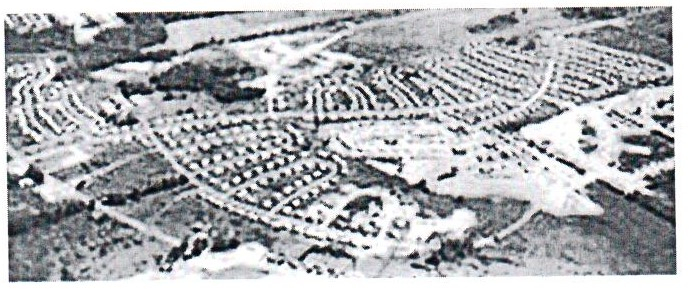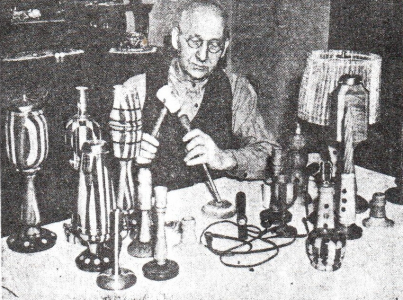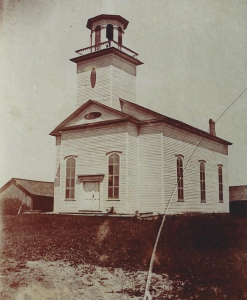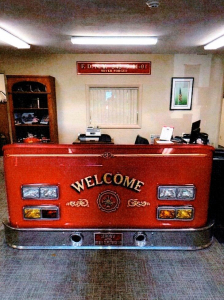Bayberry Early YearsPosted on May 3, 2021 |
Image

|
HISTORY MYSTERY: Bayberry Early Years
Early in 1955, according to the Liverpool-Salina Review, the construction of arterial highways (Thruway and Route 81) was expected to dramatically impact our area. Another impetus for home construction was the new guarantee of the federal government for GI home loans. There was a dramatic increase nationwide of young couples settling in their own households and not with their parents. They planned to buy homes with four or five bedrooms near good schools. By July, surveying had begun for Bayberry, a planned community on an initial tract of 475 acres, purchased by Bayberry Properties Inc. of Long Island, NY. It was one of the largest land purchases in Onondaga County history. Melvin and Melvin described plans for the self-sufficient community of some 1,200 homes along the extension of Buckley Road through the community to the river.
In the spring of 1956. The Post Standard advertised that on July 4, Central New York would be introduced to a new kind of living - a planned city in the suburbs with roads that would link to their jobs. Fine homes designed for healthy, happy living, with eight models to choose from. Their own school located on a 10 acre lot to be deeded to the school district. Services included water, storm sewers, sanitary sewers, street lighting, park districts, concrete gutters for the streets and main thoroughfares would have sidewalks. A marina would be built on the Seneca River as well as a parking area. ..Two swimming pools were included in the initial plan. Zoning was created for other recreational facilities, church(s), professional buildings and a shopping center.
According to Liverpool Historian, Dorianne Gutierrez, “It was a very desirable lifestyle…It was the way things should be in a perfect world.” America’s first planned community was Long Island’s Levittown, which kicked off the “Decade of the Split-level Ranch when it was under development in the late 1940’s. Actually, Levittown became the model Crandall Melvin used when he was putting together the blue prints for Bayberry.
People began visiting the construction site before it was even open to the public and said they wanted to buy. On July 4, 1956, the sales office was opened with six model homes on Apricot Lane. The homes furnished by Chappell’s were designed specifically for the Syracuse area by Scholtz. Eighteen minutes after the gates were open at 9:00 a.m. the first home was sold. By noon, 11 contracts to buy were signed. The entire first section of the development sold out by late afternoon. Everyone wanted a piece of the American Dream! By May of 1957, the community had grown to 50 homes with development on Elderberry Loop, Blackberry Road (then Buckley Road) and Cherry Tree Circle. Utilizing the latest in house designs, the builders replaced the original models with six new ones in 1958. These were built on Apricot and Apple Tree and subsequently on Blackberry, Bayberry Circle and the various loops adjoining Blackberry Road.
The first time I visited Bayberry I questioned the arrangement of the roads. The answer is that when the community was planned by the famous architectural firm of Mayer, Whittlesey & Glass their prime objectives were the elimination of four corner intersections and avoidance of through streets so as to disperse heavy traffic. They plotted the community as a series of primary loops called Circles and small loops branching off were called Lanes or Paths. These arcs start and end on the same Circle Street. Each section is named in relation to Buckley Road. North streets are called Lanes and named after fruit and berry trees. South are called Paths and named after birds. As Bayberry expanded east and west, the names followed this same pattern.
Bayberry started as a community of young people with young children coming from every state in the union so most did not have local ties. They had common financial lives and many worked for General Electric. So it was easy for them to make friends of the other residents. June Baycura, Historian and former President of BCA, called those first homeowners Pioneers. All they found was mosquitos and mud. They had to go to Liverpool, Northern Lights or Baldwinsville to shop until Tom Crosby, a former Acme manager, opened the Crosby Super Duper on Route 57. It was an immediate success! Also in 1964, Tom sponsored the newsletter for the Bayberry Community Association and the BCA NEWS was born.
Early on the children had to be bused to Buckley Road Elementary or into Liverpool. The village of Liverpool residents fought the construction of new schools north of the Thruway, but ultimately the sheer growth of the area north of the Thruway with its voting power got the Craven Crawford Elementary School. The land had been deeded over to the school district when Bayberry was formed. Then many Bayberry children could walk to school.
Bayberry continued to grow with other builders buying parcels and sections as Camperlino and Fatti and Ryan building into the 1970’s once they saw the success of this concept of living. It became a “mature” area. Many more stories of Bayberry’s growth can be told by the original owners who are still living there. And of the enjoyment and advantage of bringing up their families in the safe and friendly environment. In fact, the Clay Town Clerk, Jill Hageman-Clark, moved to Bayberry at the age of one and left but moved back after 30 years and bought the same house she grew up in.
Dorothy Heller, Historian
5-3-2021
Other
History Mysteries

Charles Dence and His Lamps
History Mystery | Sep 17, 2020
HISTORY MYSTERY: Charles Dence and His Lamps

Dutch Settlement Church
History Mystery | Sep 10, 2020
HISTORY MYSTERY: Dutch Settlement Church

